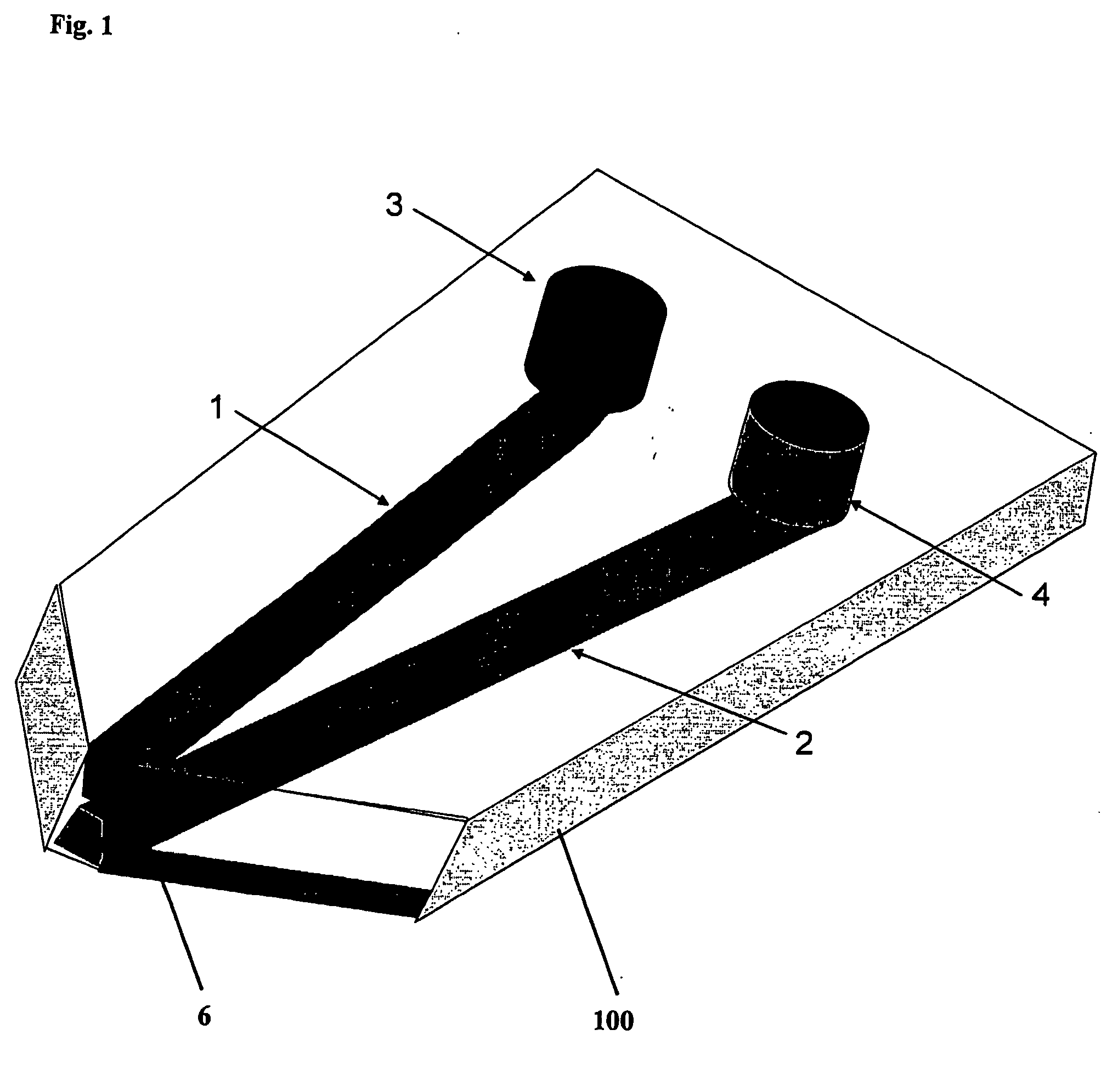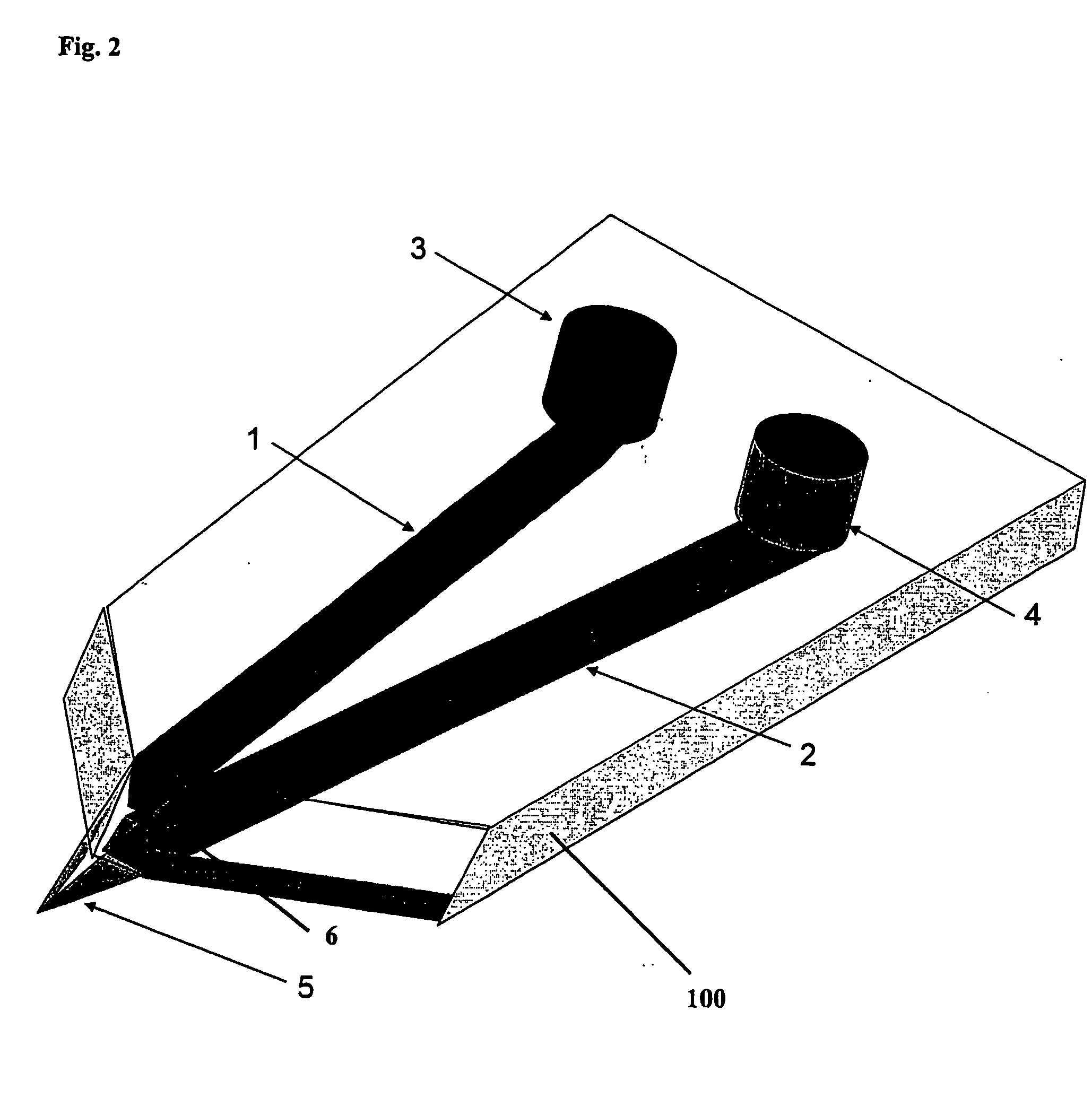Apparatus for Dispensing a Sample in Electrospray Mass Spectrometers
- Summary
- Abstract
- Description
- Claims
- Application Information
AI Technical Summary
Benefits of technology
Problems solved by technology
Method used
Image
Examples
Embodiment Construction
[0054]FIG. 1 is an example of apparatus according to the present invention which is made in a substrate 100 and which comprises two covered microstructures, namely a sample microchannel 1 and a sheath liquid microchannel 2 that are connected to inlet reservoirs 3, 4 respectively, placed on the same side of the support 100 for fluid introduction. FIG. 1 also illustrates that the microstructures have an outlet 6 formed at the edge of the support, at which the spray is to be generated upon voltage application.
[0055]FIG. 2 shows the apparatus as in FIG. 1, with the Taylor cone 5, formed upon potential application, encompassing the outlets 6 of both the sample and sheath liquid microchannels, so that the sample solution mixes with the sheath liquid solution directly in the Taylor cone.
[0056]FIG. 3A shows an example of an array of apparatuses fabricated on the same support 100, said apparatuses comprising one sample microstructure 1, one sheath liquid microstructure 2 and one supplement...
PUM
| Property | Measurement | Unit |
|---|---|---|
| Thickness | aaaaa | aaaaa |
| Length | aaaaa | aaaaa |
| Pressure | aaaaa | aaaaa |
Abstract
Description
Claims
Application Information
 Login to View More
Login to View More - R&D
- Intellectual Property
- Life Sciences
- Materials
- Tech Scout
- Unparalleled Data Quality
- Higher Quality Content
- 60% Fewer Hallucinations
Browse by: Latest US Patents, China's latest patents, Technical Efficacy Thesaurus, Application Domain, Technology Topic, Popular Technical Reports.
© 2025 PatSnap. All rights reserved.Legal|Privacy policy|Modern Slavery Act Transparency Statement|Sitemap|About US| Contact US: help@patsnap.com



